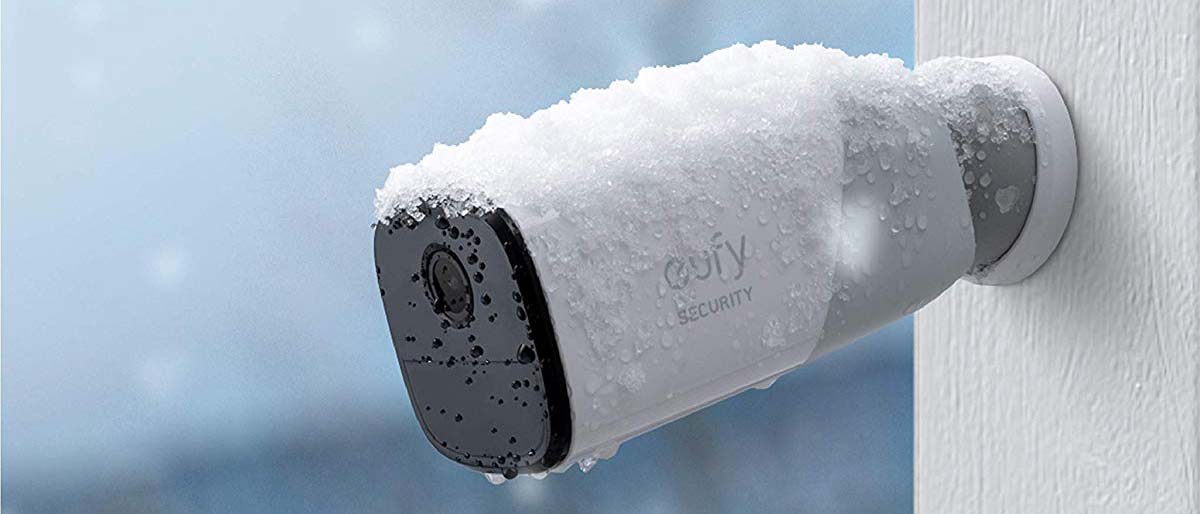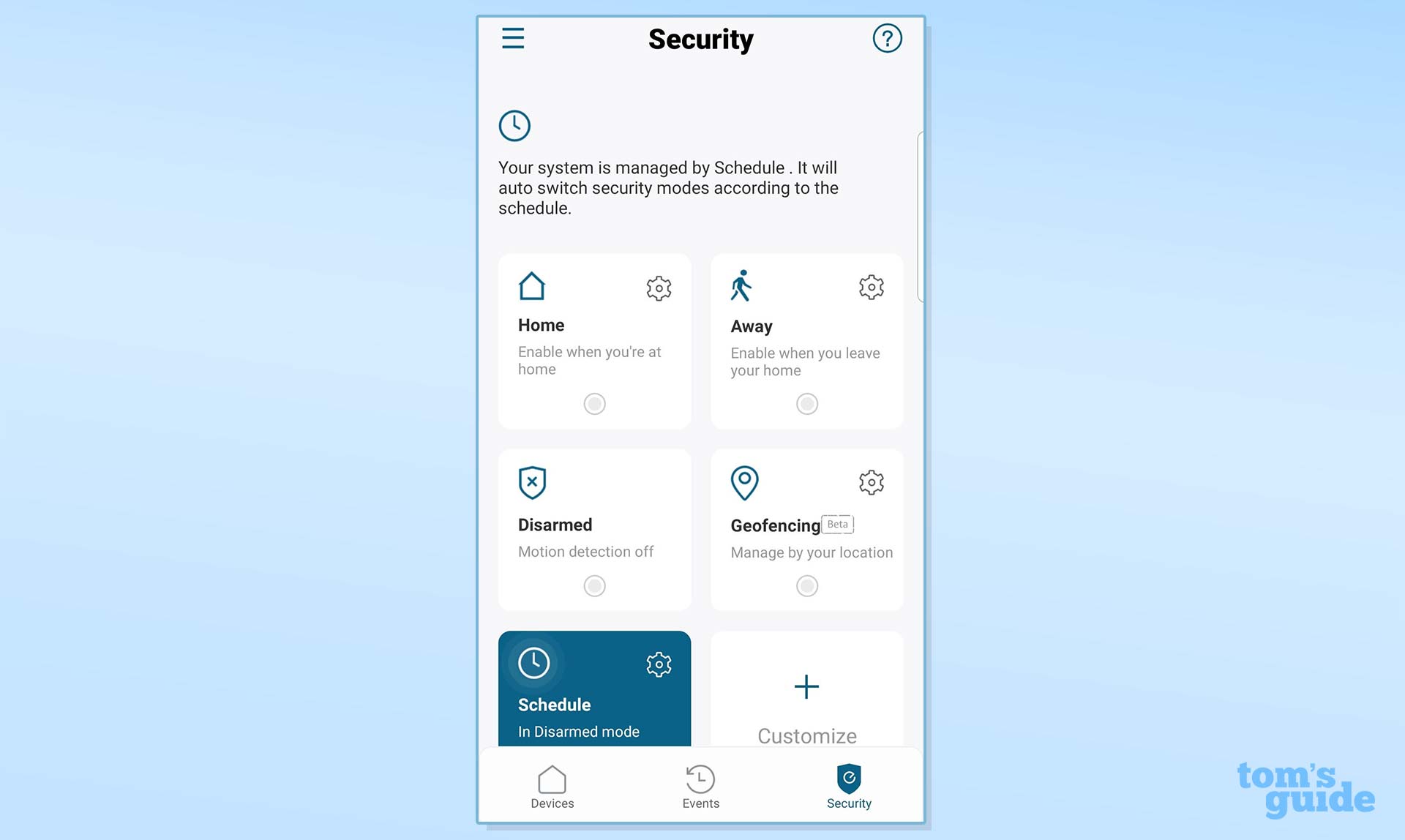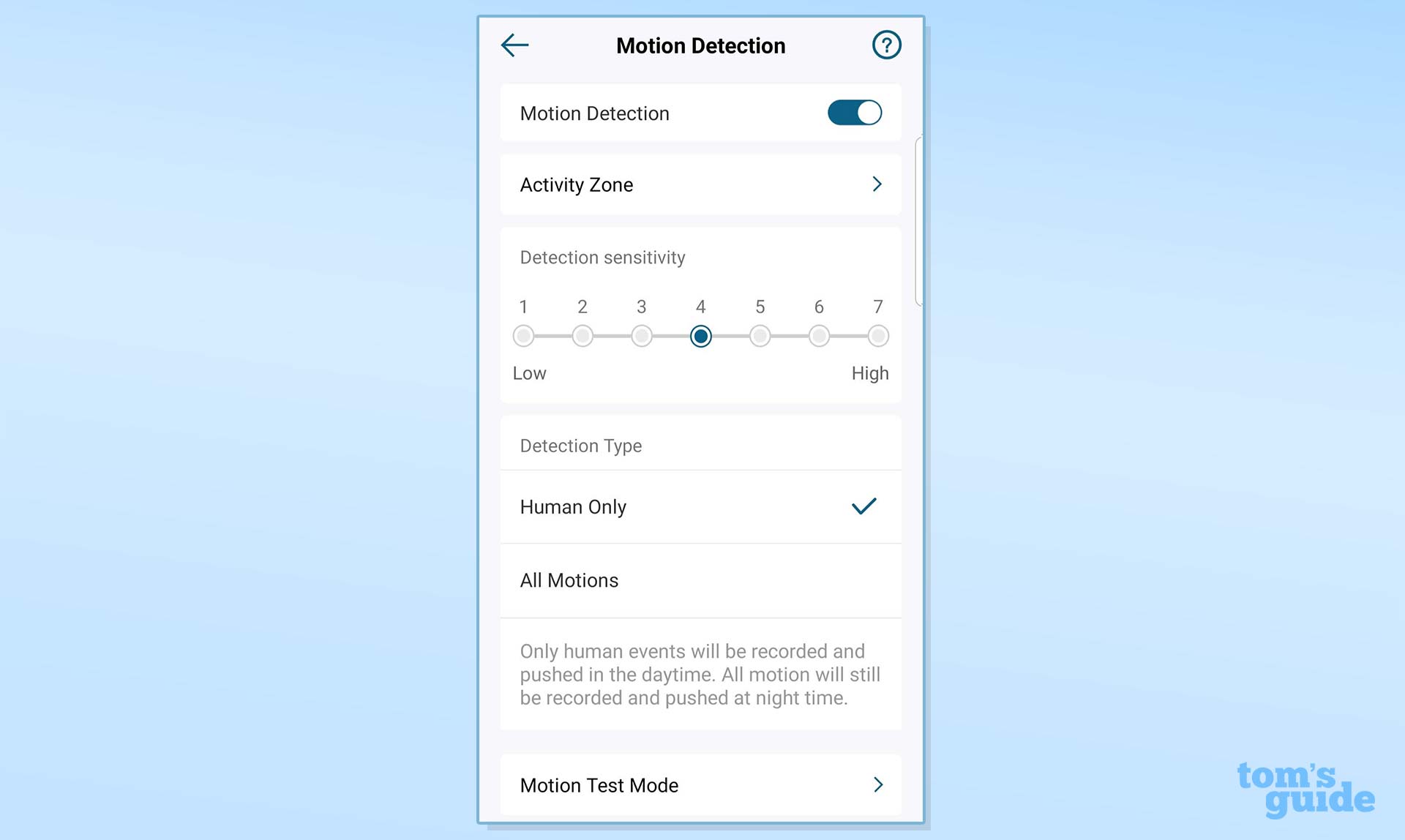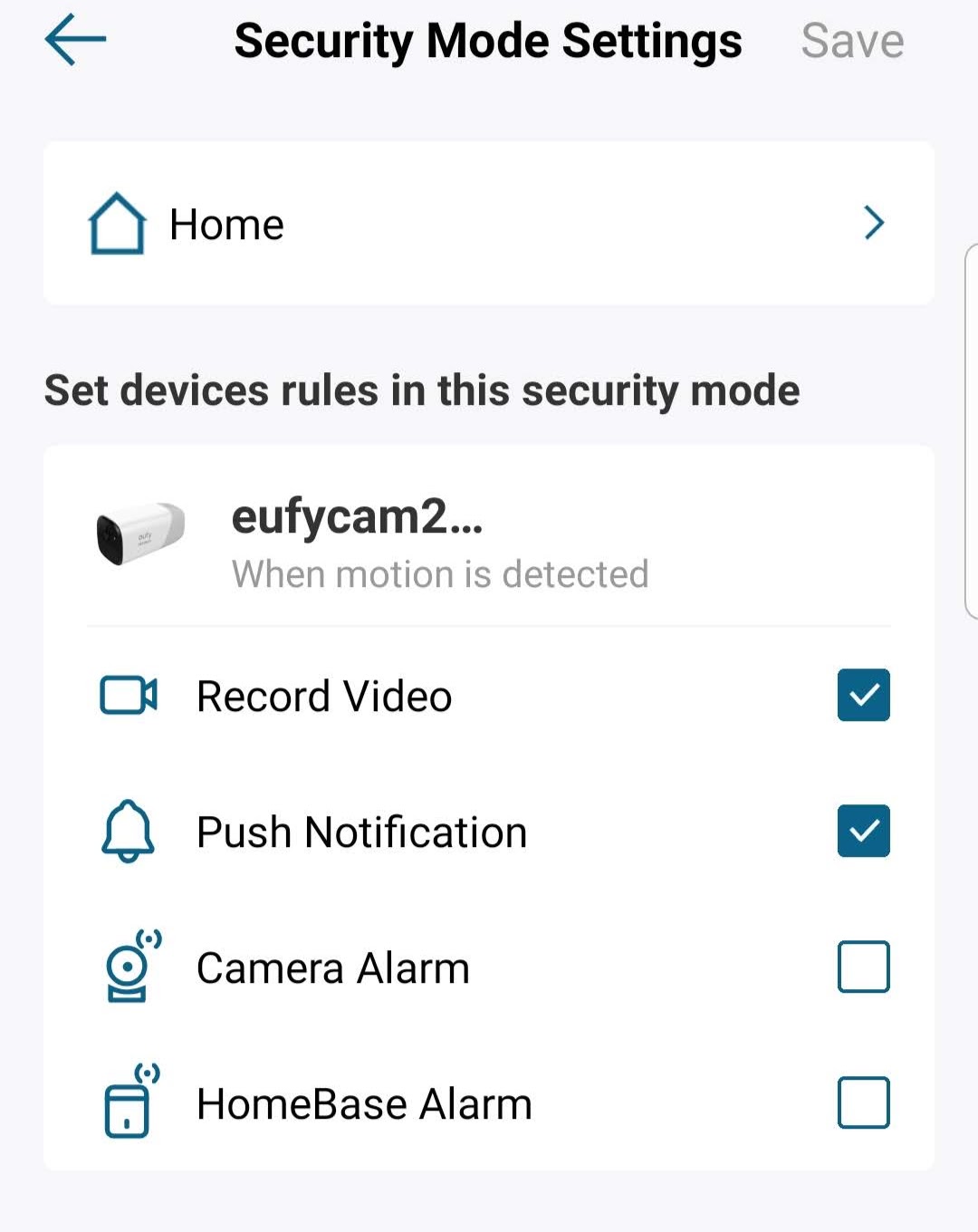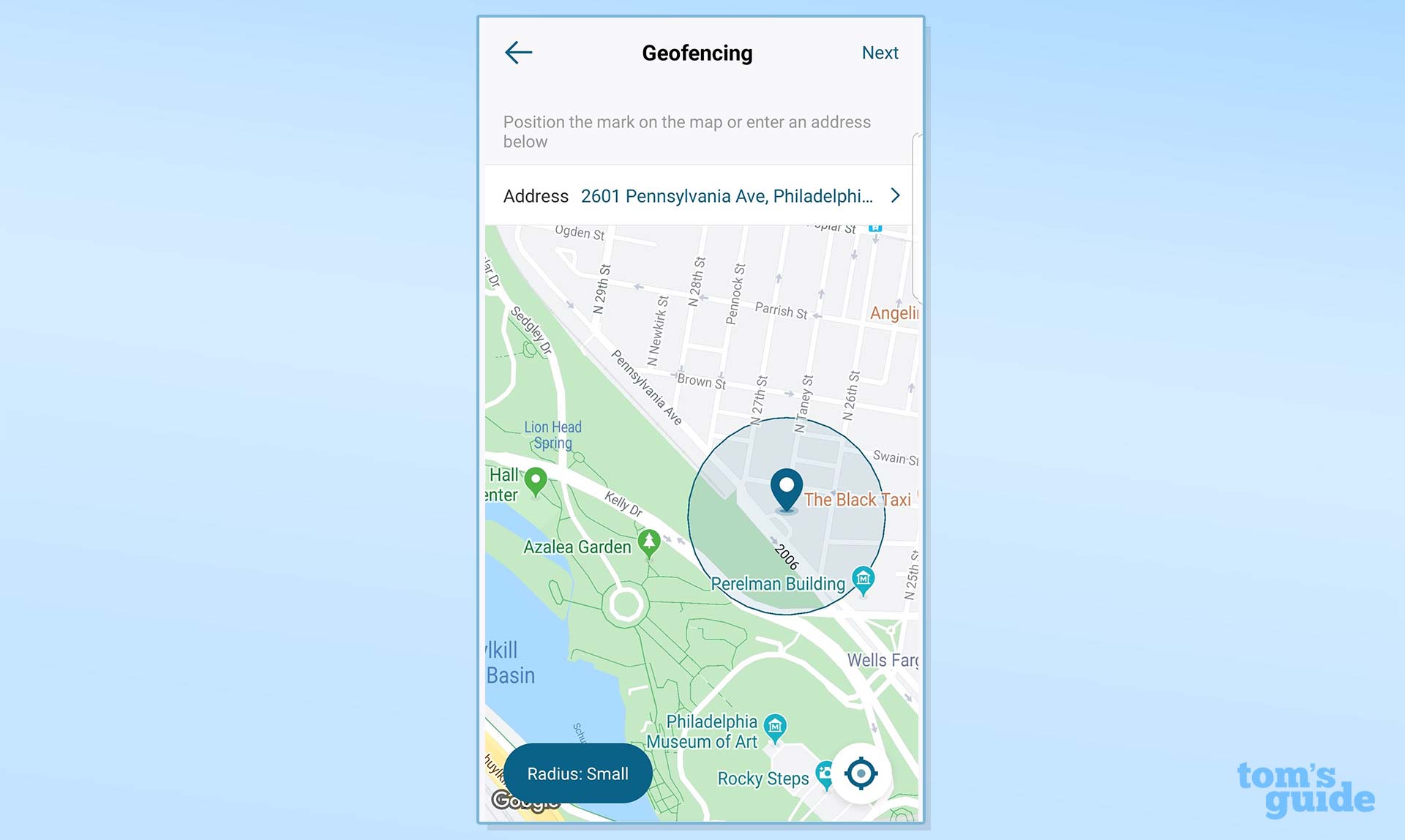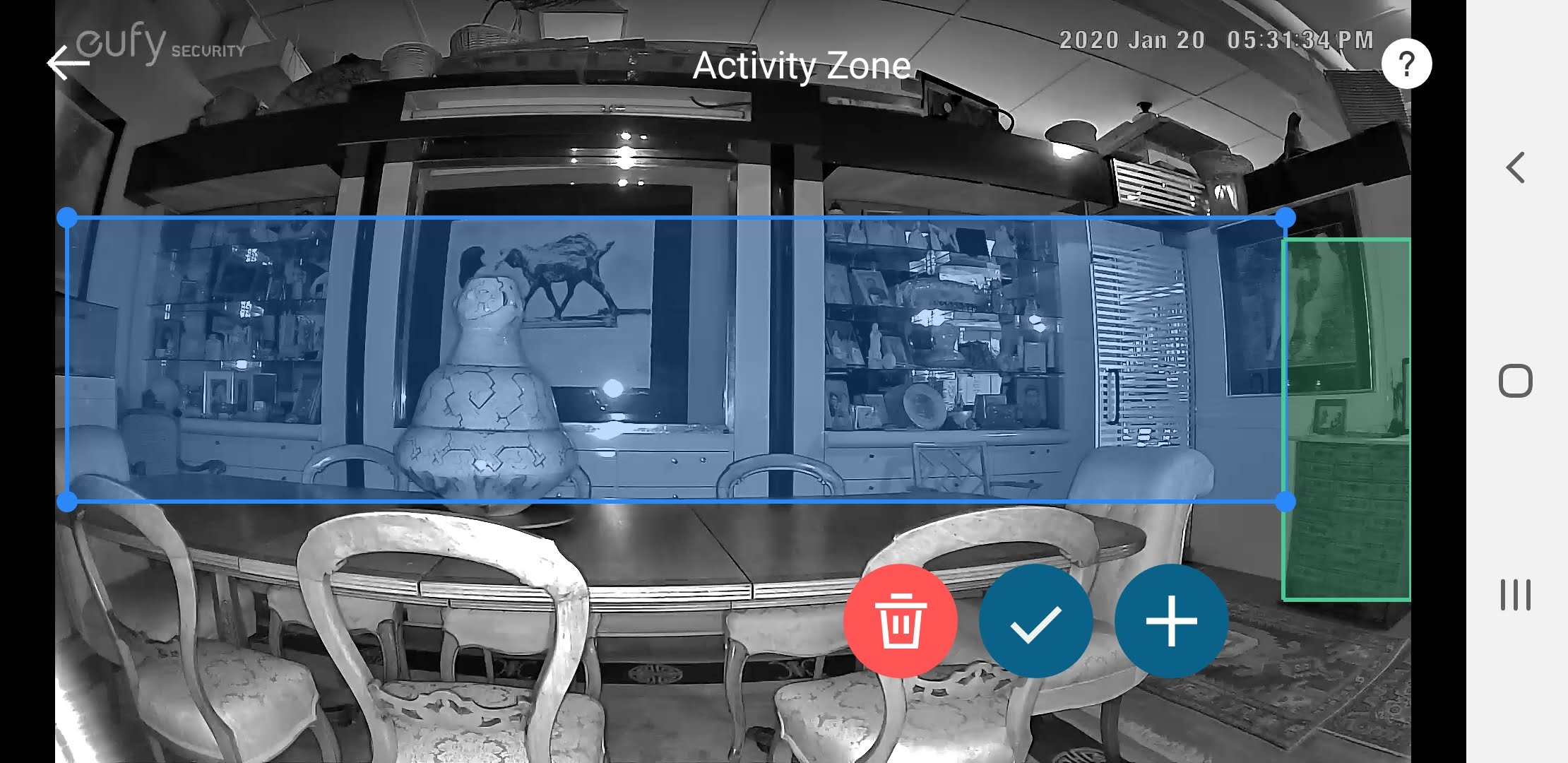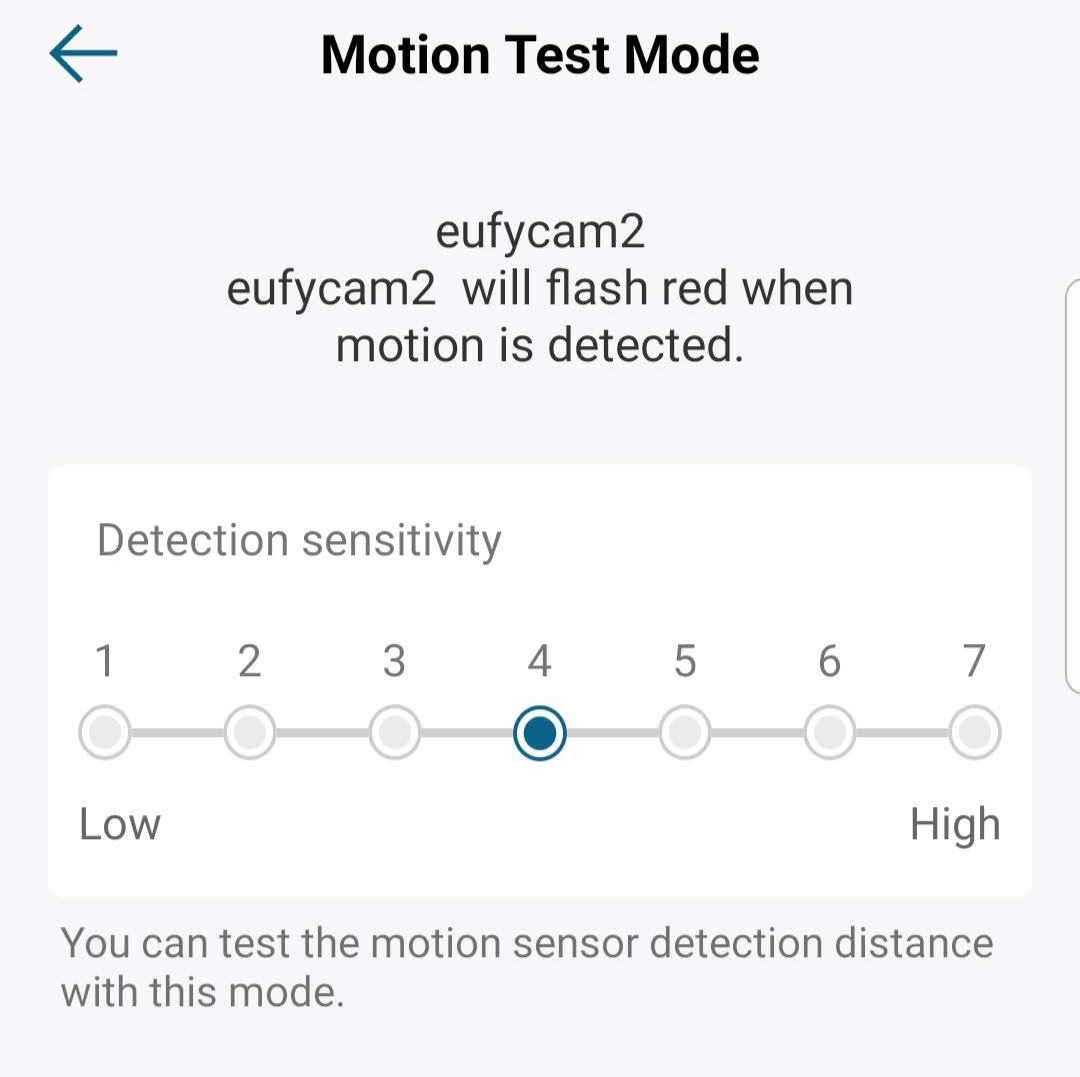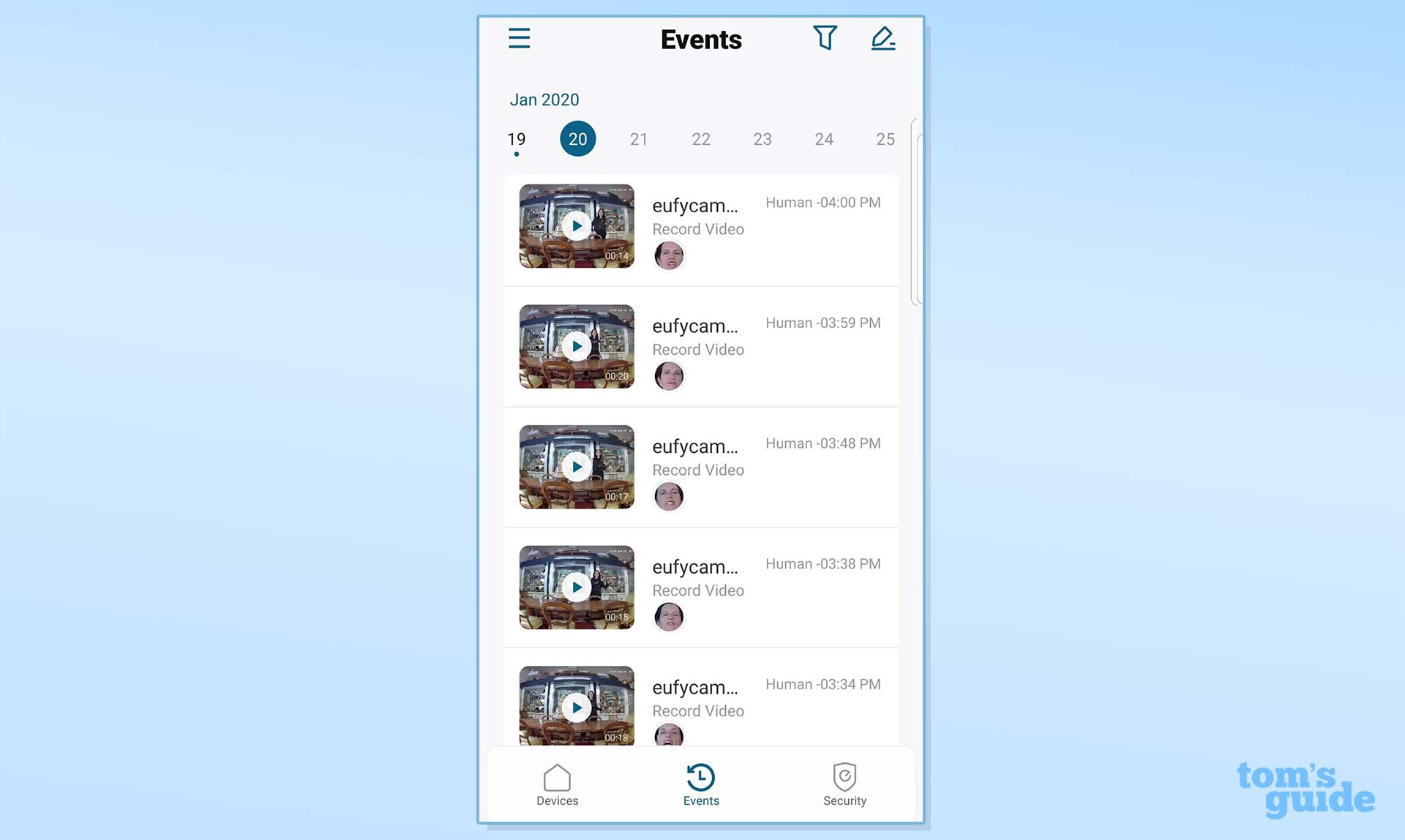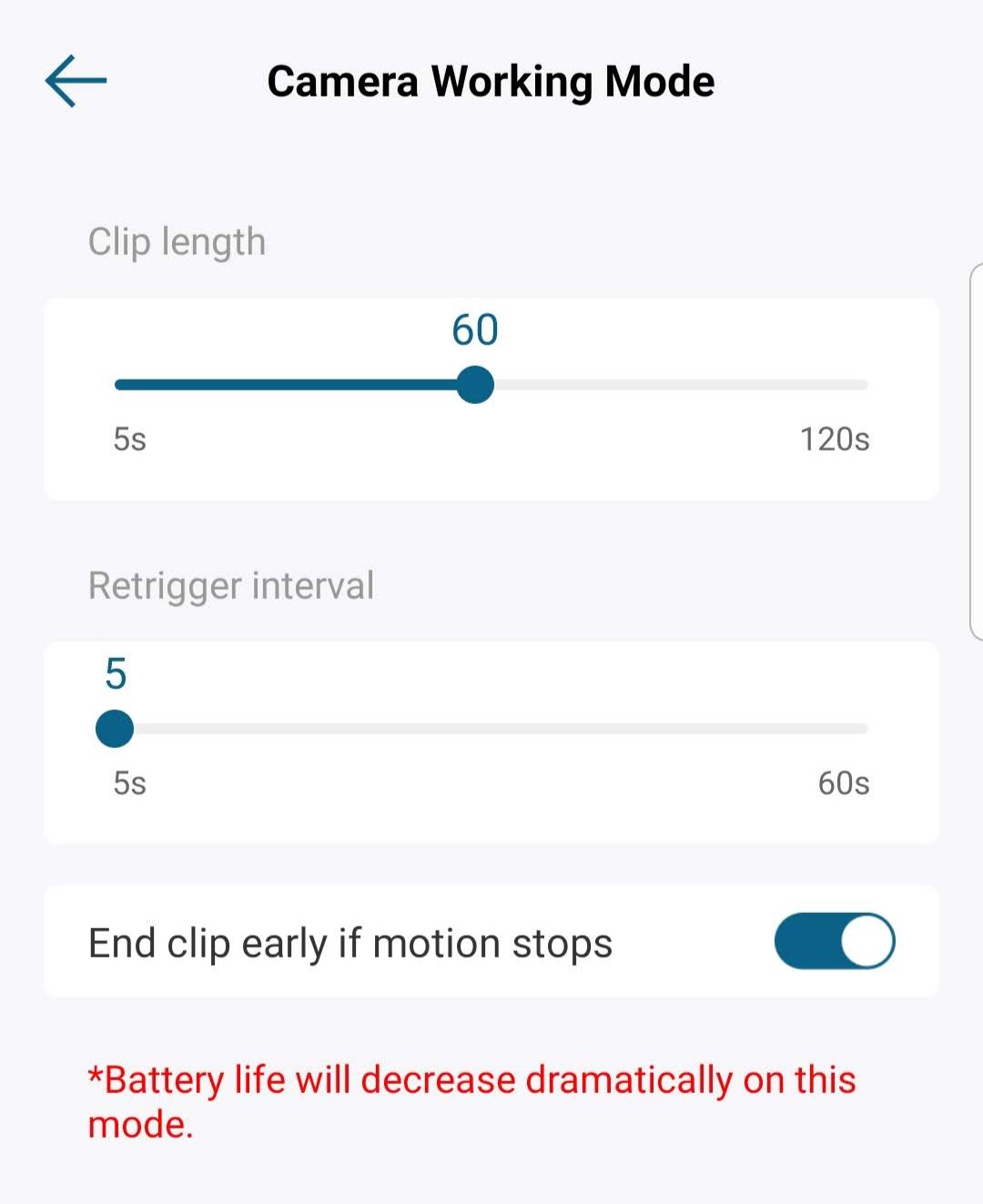Tom's Guide Verdict
The EufyCam 2 is a strong competitor to the Arlo Pro 2 home security camera. Both are camera-hub kits with the same 1080p resolution. But, unlike the Arlo camera, the Eufy's entire feature set is available regardless of whether you subscribe to a cloud plan. What's more, Eufy's local video storage is accessible through its app.
Pros
- +
Local storage
- +
All features enabled with or without a cloud plan
- +
Nice daylight video
- +
Responsive, intelligent app
- +
IP67 waterproof
Cons
- -
Blurry, pixelated night videos
- -
No microphone volume control
- -
No free cloud plan
- -
No two-factor authentication yet
Why you can trust Tom's Guide
The original EufyCam was rushed to market, before key features and functions could be implemented. Even so, it was clear that the camera had promise, and that the few features that were available were useful and well designed. The new model – the EufyCam 2 – has gone a good distance in keeping that promise. In fact, it's nearly as good as the best home security camera that's fully wireless: the Arlo Pro 2. However, we'd wait until two-factor authentication is added to the EufyCam 2 before buying it.
EufyCam 2 price and availability
The EufyCam 2 is currently available for $349, which includes two cameras and a base station. Additional cameras cost $149 each.
Design
Physically, the EufyCam2 is identical to the original EufyCam: a low-profile oblong device that's 4.25 x 2.25 x 2.25 inches. The black face is sleekly aligned with the curved white body. Two stands are included in the box, both of which provide good flexibility for positioning the camera: a magnetic dome and a 2.25-inch-tall screw-in base.
The EufyCam 2 has four infrared LEDs arrayed around the lens for night-vision videos instead of the previous model's two. The speaker and microphone are on the bottom of the camera (near the front). In addition, the camera has an internal 90-decibel siren.
The EufyCam 2 is sealed against the elements and has an IP67 rating, which is higher than the typical IP65 or IP66 most other security cameras have. (The Arlo Pro cameras are IP65.) In other words, the Eufy is not just weatherproof but waterproof, which means it can be immersed in water without damaging it.
Video resolution: 1080p
Field of view: 120 degrees
Night vision: Four IR LEDs
Network connectivity: 802.11b/g/n and Ethernet
Smart-home connectivity: Google Assistant, Alexa and Apple Homekit
IFTTT connectivity: No
Audio: Full duplex two-way audio.
Mobile devices supported: Android 5.0 or above and iOS 10.2 or above
Web browsers supported: Chrome: 73.0.3+, Firefox: 66.0.1+, Safari 12.1+, IE 9+
Cloud storage & monitoring: 30-day rolling storage for $2.99/month/camera ($29.99/year/camera), or $9.99/month/10 cameras ($99.99/year/10 cameras).
Local storage: 16 GB eMMC in the HomeBase
Security: WPA2, AES-256
MSRP: $349.99 for two cameras and a home base.
The downside of having a fully sealed unit means that, when the battery runs out of juice and needs recharging, the camera must be taken down from its mounting or a charging cable attached to it. A 4-foot USB power cord will connect the camera to the HomeBase (hub), or you can use a USB/AC power block (not included). The company claims that the battery will last up to a year.
Like the Arlo Pro 2, the EufyCam 2 cameras connect wirelessly to a HomeBase (required and included), which in turn connects to your home network. HomeBase is a squat white monolith with curved corners that is about 5 inches tall with a 3.5-inch x 3.5-inch footprint. It houses 16 GB of eMMC storage for videos, which sets it apart from the Arlo hub, which requires you to supply an external USB drive. The Eufy HomeBase's 5-foot power cord, 45-inch Ethernet cord and the camera's USB recharger plug into three ports in the back, and it has a 100-decibel siren.
Get instant access to breaking news, the hottest reviews, great deals and helpful tips.
Eufy's Wi-Fi is WPA2 encrypted, all videos are encrypted with AES-256 and the data are double-encrypted. Although the EufyCam 2 didn't support two-factor authentication at the time of my testing the camera, the company said that it plans to add it in February 2020.
Video quality
The EufyCam 2's 1/2.8-inch 2-megapixel Sony sensor and glass lens capture nice-quality 1080p daylight videos, but I was disappointed in the night videos.
My daylight videos were colorful and properly exposed, and were sharp enough to clearly recognize faces. However, the midtones were often posterized, particularly in my indoor videos. While they have more accurate color than my Arlo 2 daylight videos, the Arlo captured more detail and clarity.
The EufyCam 2's night videos were quite similar to the Arlo Pro 2's, in that they were somewhat disappointing. Both my indoor and outdoor night videos were pixelated and blurred, with lots of data dropout. Still, faces were generally recognizable. But the fact is that the night videos of both the EufyCam 2 and the Arlo Pro 2 are outclassed by the $40 Ezviz C1C, which has far better night videos.
Audio quality
In my tests of recorded videos, I could clearly hear anyone standing within 25 feet of the camera. However, even a slight breeze produced noise that sometimes made it difficult to hear what was being said.
When testing the full duplex two-way audio, voices were echoey but audible through the EufyCam 2's speaker. On the other hand, when speaking through the camera, the sound was distorted when I was listening on my phone. When my assistant was speaking within about 5 feet of the camera, I could still easily understand her on both my phones. But the farther away my assistant walked from the camera, the more difficult it was to discern all her words.
Motion detection
The controls for motion detection are in two very different areas of Eufy's app, which can cause confusion. The Security screen, which is accessed via an icon at the bottom of the main screens, controls scheduling, geofencing and the modes (Home, Away, Disarmed and Custom).
Tucked away into a subscreen of the Camera Settings, the Motion Detection screen handles activity zones, motion-detection sensitivity, a motion-sensitivity test and detection type (human only or all motion). Eufy doesn't have audio detection.
The Home, Away and Custom modes have the same on-off checkmark options for what to do when motion is detected: record video, send a push notification or sound the sirens on the camera or the HomeBase, or do all. Tapping the Disarmed icon in the Security screen turns everything off.
Geofencing automatically turns on the Away mode when you (and your phone) leave home, and changes it to the Home mode when you return. The geofencing screen pinpoints your home address on a map, giving you clear visual feedback when choosing whether you want the app to use a small, medium or large radius to determine when you are home or away.
Scheduling specific days and times when the Away mode will be automatically applied is intelligent, flexible and easy to use. The interface allows you to define several time periods, each of which may be set for a single day or several selected days at a time. Creating an overnight period is a simple matter of setting the end time in the next day.
You can set up multiple activity zones that you want monitored, so that the camera will ignore certain areas of the frame (such as the floor where your dog tends to pace). However, the zones are rectangular only, rather than polygonal.
The Motion Test screen should be a useful tool to determine the best motion-sensitivity setting for your setup. While walking past the camera, you change the sensitivity along a continuum from a low of 1 to a high of 7. The camera will blink red when it "sees" you. Your final choice in this test screen will be automatically applied to the motion-detection settings. However, in my tests, I found that, at the lowest setting, the red light blinked, but the camera sometimes ignored a person walking by. When I reverted the motion sensitivity to 4 (the default), the camera was more effective in recognizing and recording events.
Cloud storage
Unlike some cameras, such as the Arlo cameras, EufyCam 2 is fully functional whether or not you subscribe to a cloud plan. However, Eufy has no free cloud plans (which are still available with some Arlo cameras such as the Arlo Pro 2 and Arlo Q.)
All videos are stored locally on the Eufy HomeBase's internal memory. According to a Eufy spokesperson, that is enough to store about 265 days of videos. Unlike the Arlo cameras, which don't let you view locally stored videos online, the Eufy's locally stored videos are accessible via the phone app (though not the web portal).
One key value of Eufy's local storage is that all AI analyses are done locally, which ensures privacy and is usually much quicker than cloud-based analyses. In my tests, I found the app and notifications to be quite responsive.
If you want the safeguard of offsite data redundancy, Eufy sells 30-day rolling-cloud subscriptions. The Basic plan costs $2.99 a month per camera or $29.99 a year per camera. The Premium plan covers up to 10 cameras for $9.99 a month or $99.99 a year.
Mobile apps
The mobile app (Android 5.0+ and iOS 10.2+) is well-organized and easy to manage, though not as feature-deep as the Arlo app. The one major problem I have with the EufyCam app is the division of motion-detection controls into two separate sections of the app. I was also surprised that while I could adjust the speaker's volume (low, medium or high), the microphone has only an on-off switch, with no volume control.
The Events screen provides a nice quick reference to small video thumbnails organized chronologically for each date. Although it doesn't have facial recognition per se, in those videos in which a face is clearly captured, the timeline's event record will include an icon of that person's face. Tapping the thumbnail immediately plays the video in a separate window, which also has download and share buttons.
Camera modes give you a choice between performance and longer battery life. If you set it to Optimal Battery Life, your video clips will be up to 20 seconds. Choosing the Optimal Surveillance mode will give you clips up to 60 seconds. Or you can create a Custom mode in which you select your video clip length (from 5 to 120 seconds), the retrigger interval (5 to 60 seconds) and whether clips should end early if the motion stops.
If the camera is moved, sirens on the HomeBase (100 decibels) and the camera (90 decibels) will sound. However, you can disable that anti-theft feature in the app. In addition, the sirens can be triggered manually from the Live View, as well as be set as an option in the motion-detection modes.
Web portal
The Eufy web portal (Chrome, Safari, Firefox, IE9 and Edge) is next to useless. Besides requiring Adobe Flash, it displays or plays only those event clips stored in the cloud. You can't access videos from the HomeBase. The web portal's only functions are monitoring the Live View, managing your cloud subscriptions and viewing cloud-stored videos – all of which are well-handled by the mobile app. The portal has none of the app's other functions or settings.
Smart-home integration
You can use Google Assistant and Amazon Alexa to view the camera's video stream. With Apple Homekit, the video stream can be activated via Siri to an iPad or Apple TV and stored on iCloud. The Eufy app doesn't support IFTTT.
Bottom line
The EufyCam 2 has the same resolution, setup (cameras and hub) and generally comparable features to the Arlo Pro 2. The prices are similar, too, with the EufyCam 2 about $50 less. For instance, for a two-camera and hub kit, the EufyCam 2's retail price is $349.99, and the Arlo Pro 2 is $399.99.
The Arlo Pro 2's free 7-day rolling-cloud storage and its deep app make it quite appealing. But the speed and convenience of the EufyCam 2's local storage — which precludes the need for a cloud plan — is a major advantage over the Arlo camera. What's more, unlike the Arlo, all of Eufy's features are available without buying a subscription. Still, in my tests, I had some issues with Eufy's audio. The Eufy's daylight videos weren't quite as detailed as the Arlo Pro 2's. And both have the same weakness: blurry, pixelated night-vision videos.
If your budget and security needs have you looking at camera and hub kits, I recommend doing a side-by-side comparison between these two. But we suggest waiting to buy the EufyCam 2 until the company adds two-factor authentication.

Sally Wiener Grotta is the president and lead analyst of DigitalBenchmarks test lab (www.DigitalBenchmarks.com). The scripts she created for various tech publications for testing and evaluating digital cameras, image quality, software and related technologies have become industry standards. Among her numerous books is the first major volume on image processing “Digital Imaging for Visual Artists” (McGraw-Hill), co-authored with Daniel Grotta. Her hundreds of reviews, stories and columns have appeared in scores of magazines, journals and online publications.
